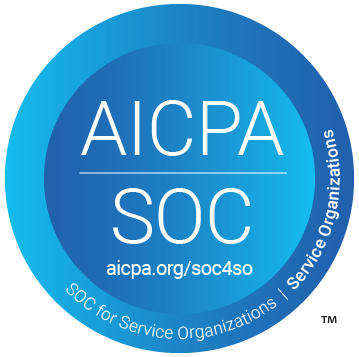Software delivery rarely waits. Teams face constant pressure to release new features without letting quality slip. In this landscape, asking what is CI/CD is more than a technical curiosity — it is a response to how modern organizations survive.
CI/CD, the practice of continuous integration and continuous delivery or deployment, creates an automated rhythm where code flows from development to production with fewer interruptions. By relying on automation, teams:
- speed up releases;
- reduce mistakes; and
- adapt to shorter innovation cycles.
The growing demand for agility in software development has made CI/CD a central pillar, not a side option. Keep reading to see how this methodology reshapes the way software comes to life.
What is CI/CD?
CI/CD brings automation to integration, testing, and delivery, giving developers a way to move code forward with speed and confidence.
Instead of waiting for long cycles, every change enters a shared repository, where automated checks verify it does not disrupt what is already in place.
From there, the process branches out:
- continuous delivery prepares each build for release;
- continuous deployment takes the final step, sending updates straight into production without waiting for manual approval.
Together, these practices create a steady rhythm that keeps projects moving.
The value lies in what it removes as much as in what it adds. Manual routines that once slowed progress become less of a burden. Errors surface early through constant testing, and deployments no longer hinge on stressful, late-night interventions.
Companies that embed CI/CD into their workflow tend to experience fewer interruptions and can redirect energy toward customer priorities. Over time, the pace of development feels more sustainable, and teams find the work less exhausting.
How does a CI/CD pipeline work?
A CI/CD pipeline is the sequence of automated steps that takes code from a developer’s desk to production. It usually begins with a commit that triggers automated builds and tests. Each stage acts as a checkpoint:
- if the code passes, it moves forward;
- if it fails, the pipeline halts and alerts the team.
By the time an update reaches production, it has gone through several layers of validation.
What makes the pipeline more than just a chain of tasks is the constant feedback loop it creates. Developers know within minutes if a change caused issues, instead of discovering them days later.
This quick turnaround reshapes collaboration: teams solve problems while they are still small.
Modern pipelines often link to cloud platforms, container tools, and monitoring systems, which means deployment does not feel like a dramatic event but part of a natural flow. The pipeline becomes the quiet backbone of continuous delivery.
What are the benefits of implementing CI/CD?
The benefits of CI/CD appear first in release cycles. Updates reach users more often, and downtime is reduced. With builds and tests automated, the likelihood of introducing bugs decreases.
Customers experience more stable applications, and teams gain confidence to ship changes regularly. Faster delivery is not only about speed; it is about creating a rhythm that supports both innovation and reliability.
There is also the cultural shift. Development and operations share ownership of delivery, which reduces silos and encourages open communication. Instead of waiting for handoffs, teams interact constantly through the pipeline. This collaboration lowers friction and shortens problem resolution.
As projects grow, scalability becomes another advantage. A well-designed pipeline can handle a growing number of services without demanding the same growth in manual oversight.
Flexibility plays a role too. CI/CD pipelines adapt to different programming languages, frameworks, and environments. That adaptability makes them suitable for startups and enterprises alike.
Perhaps the less visible benefit is psychological: teams embrace experimentation more freely when they know there is a safety net of automated checks. Innovation becomes less risky when small changes can be shipped, tested, and rolled back quickly if needed.
How The Ksquare Group helps companies implement CI/CD?
The Ksquare Group helps organizations bring CI/CD into practice with a framework built to expand automation without losing control. It blends consulting, integration services, and technical know-how, guiding companies from the first sketches of strategy to pipelines running in production.
The framework sets a clear structure, but it is flexible enough to adapt to each stack, team, and business goal.
What makes the approach different is the attention to what happens after the initial rollout. Selecting tools that fit existing systems, weaving them into day-to-day operations, and preparing teams for new habits are treated as priorities.
CI/CD is not presented as a set of scripts or dashboards, but as a cultural shift that reshapes how people work together. That perspective prevents common traps, like half-finished implementations or isolated processes that never deliver real value.
For companies ready to rethink their delivery model, The Ksquare Group offers more than a technical upgrade. It provides a path that feels less like a disruptive leap and more like a guided transition.
By tying automation to business goals, the framework ensures pipelines become more than efficient routines — they turn into engines of growth.
If you are interested in how this methodology can reshape their development lifecycle, visit Ksquare’s solutions page and learn more about the services available.
Summarizing
What is CI/CD in simple terms?
CI/CD is a method in software development that uses automation to integrate, test, and deliver code. It helps teams release updates faster, reduce errors, and keep applications stable while supporting continuous improvement.
Is CI/CD different from DevOps?
Yes. DevOps is a cultural and organizational approach that unites development and operations, while CI/CD is a specific practice within it, focused on automating code integration, testing, and delivery to streamline software releases.
image credits: Freepik



